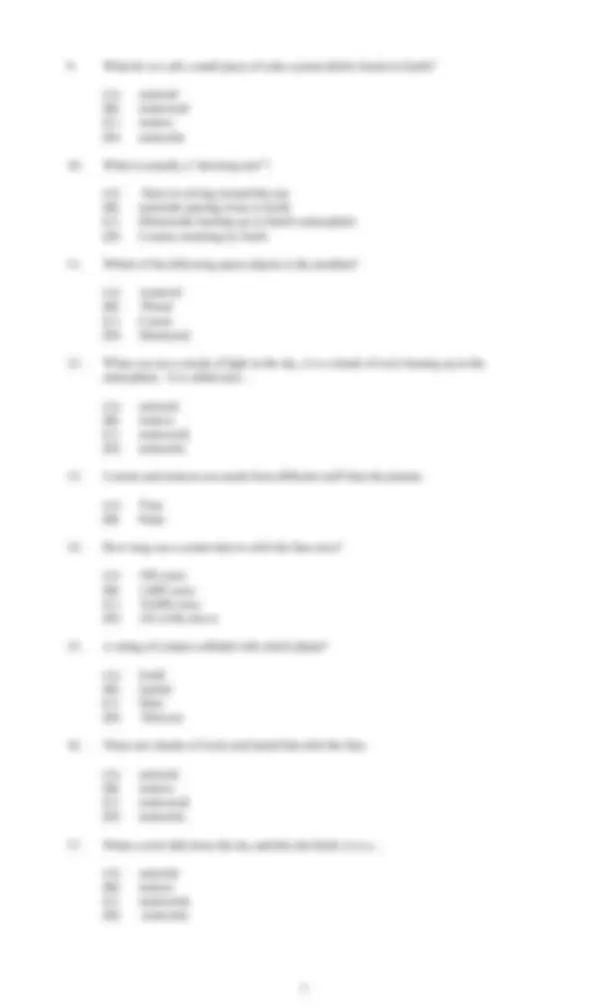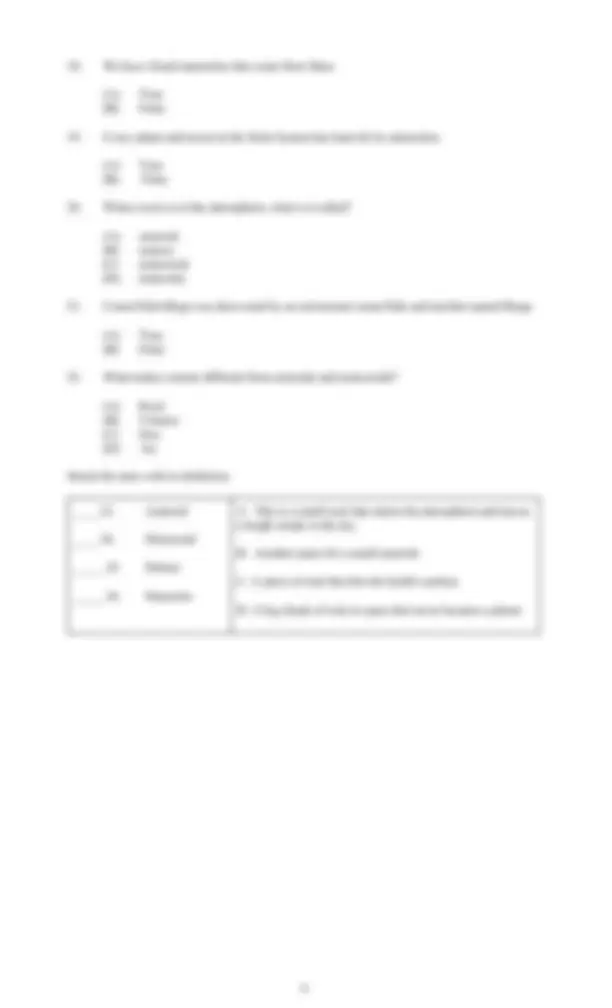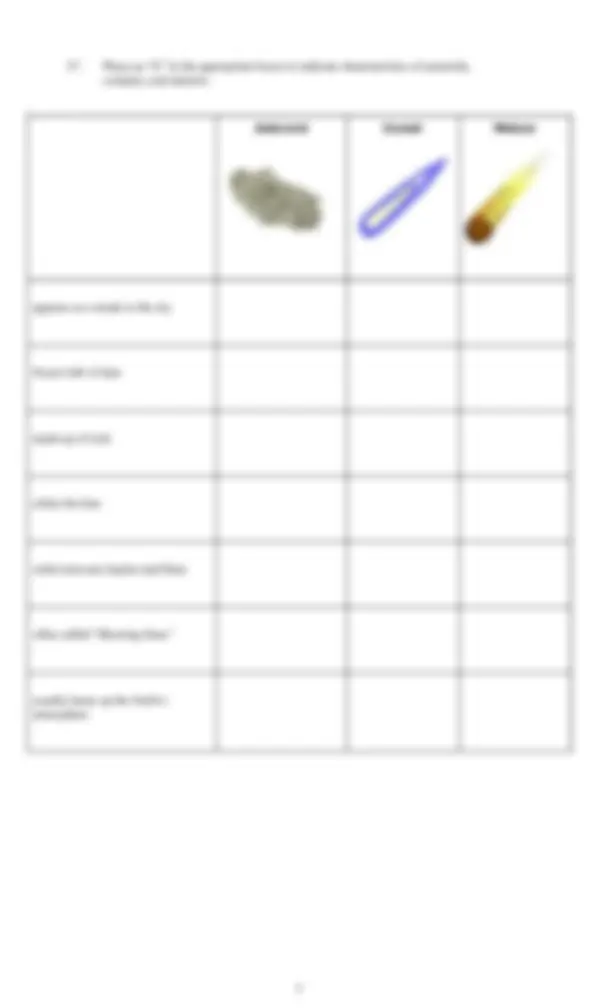





Study with the several resources on Docsity

Earn points by helping other students or get them with a premium plan


Prepare for your exams
Study with the several resources on Docsity

Earn points to download
Earn points by helping other students or get them with a premium plan
Community
Ask the community for help and clear up your study doubts
Discover the best universities in your country according to Docsity users
Free resources
Download our free guides on studying techniques, anxiety management strategies, and thesis advice from Docsity tutors
What do we call a small piece of solar system debris found on Earth? (A) asteroid. (B) meteoroid. (C) meteor. (D) meteorite. 10. What is ...
Typology: Lecture notes
1 / 5

This page cannot be seen from the preview
Don't miss anything!




1) Comets:
Parts of a Comet:
Tail is composed of gas and dust emitted from the nucleus
Nucleus is the solid, central part of a comet. it is a combination of ice, dust and rock
Coma is a large, dusty atmosphere surrounding the nucleus, made up of sublimated gas mixed with dust.
2) Asteroids
3) Meteoroid, Meteors and Meteorites
Meteoroids are pieces of rock (i.e. chunks of asteroids or planets) floating through space
Meteors are “shooting stars” or meteoroids that are burning up through the earth’s atmosphere
Meteorites are meteors that actually reach the earth’s surface (must have been large meteors to survive)
Impact sites is the place where a relatively small object (meteorite) has collided with a larger object (planet) to produce a fairly circular depression on the surface of the larger object. The impact site is often referred to as an impact crater due to the circular depression that was formed.
Near-Earth Objects (NEOs) are comets and asteroids that have been nudged by the gravitational attraction of nearby planets into orbits that allow them to enter the Earth's neighborhood
PART B: Use the notes from class and the information from Bill Nye - Comets and Meteors Video to answer the following questions.
(A) rock (B) gaseous (C) dirty ice (D) metallic crystals
(A) Hydrogen (B) Ice (C) Iron (D) Rock
(A) Coma (B) Crater (C) Head (D) Maria
(A) a cluster of asteroids (B) a swarm of comets far from the sun (C) the cloud that a meteoroid produces in the atmosphere (D) the same as the coma of a comet
(A) Venus and Earth (B) Earth and Mars (C) Mars and Jupiter (D) Jupiter and Saturn
(A) Meteoroids are generally bigger than asteroids (B) Asteroids are only found in the "belt" between Mars and Jupiter (C) Asteroids are generally bigger than meteoroids (D) Asteroids are pieces of comets, whereas meteoroids are pieces of space debris
(A) impacts of meteoroids with the moon (B) dead comets (C) collisions of asteroids with each other (D) interstellar space
A) a streak of light caused by a star moving across the sky B) a streak of light caused by a small particle from space burning up in Earth's atmosphere (C) a fragment of an asteroid from the solar system that has fallen to Earth's surface (D) a small moon that orbits one of the giant planets
(A) True (B) False
(A) True (B) False
(A) asteroid. (B) meteor. (C) meteoroid (D) meteorite.
(A) True (B) False
(A) Rock (B) Volume (C) Size (D) Ice
Match the term with its definition
____ 23. Asteroid
____ 24. Meteoroid
_____ 25. Meteor
_____ 26. Meteorite
A. This is a small rock that enters the atmosphere and leaves a bright streak in the sky.
B. Another name for a small asteroid.
C. A piece of rock that hits the Earth's surface.
D. A big chunk of rock in space that never became a planet.
.
Asteroid Comet Meteor
appears as a streak in the sky
frozen ball of dust
made up of rock
orbits the Sun
orbits between Jupiter and Mars
often called “Shooting Stars”
usually burns up the Earth’s atmosphere